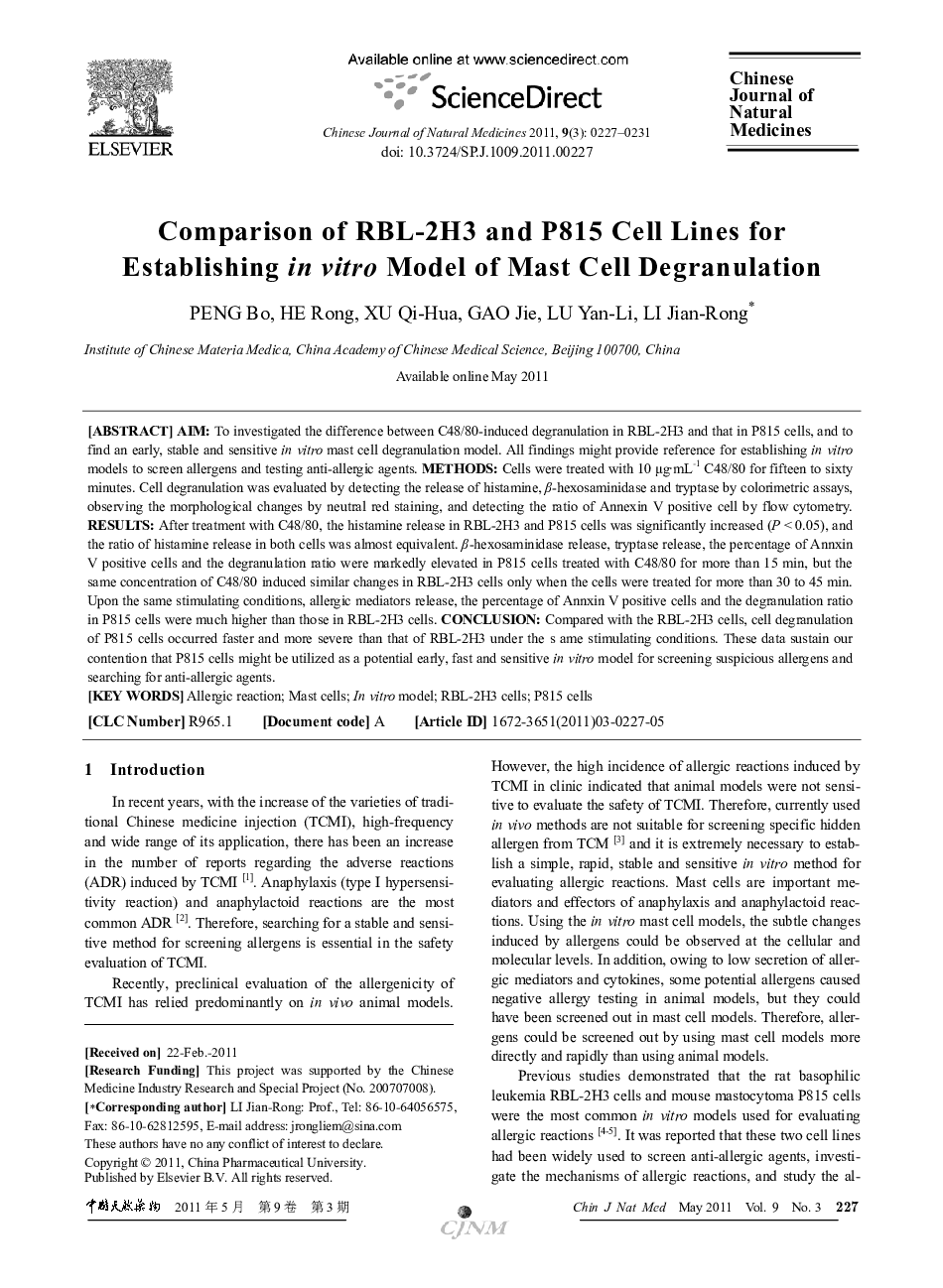| Article ID | Journal | Published Year | Pages | File Type |
|---|---|---|---|---|
| 2526656 | Chinese Journal of Natural Medicines | 2011 | 5 Pages |
AimTo investigated the difference between C48/80-induced degranulation in RBL-2H3 and that in P815 cells, and to find an early, stable and sensitive in vitro mast cell degranulation model. All findings might provide reference for establishing in vitro models to screen allergens and testing anti-allergic agents.MethodsCells were treated with 10 μg·mL−1 C48/80 for fifteen to sixty minutes. Cell degranulation was evaluated by detecting the release of histamine, β-hexosaminidase and tryptase by colorimetric assays, observing the morphological changes by neutral red staining, and detecting the ratio of Annexin V positive cell by flow cytometry.ResultsAfter treatment with C48/80, the histamine release in RBL-2H3 and P815 cells was significantly increased (P < 0.05), and the ratio of histamine release in both cells was almost equivalent. β-hexosaminidase release, tryptase release, the percentage of Annxin V positive cells and the degranulation ratio were markedly elevated in P815 cells treated with C48/80 for more than 15 min, but the same concentration of C48/80 induced similar changes in RBL-2H3 cells only when the cells were treated for more than 30 to 45 min. Upon the same stimulating conditions, allergic mediators release, the percentage of Annxin V positive cells and the degranulation ratio in P815 cells were much higher than those in RBL-2H3 cells.ConclusionCompared with the RBL-2H3 cells, cell degranulation of P815 cells occurred faster and more severe than that of RBL-2H3 under the s ame stimulating conditions. These data sustain our contention that P815 cells might be utilized as a potential early, fast and sensitive in vitro model for screening suspicious allergens and searching for anti-allergic agents.
